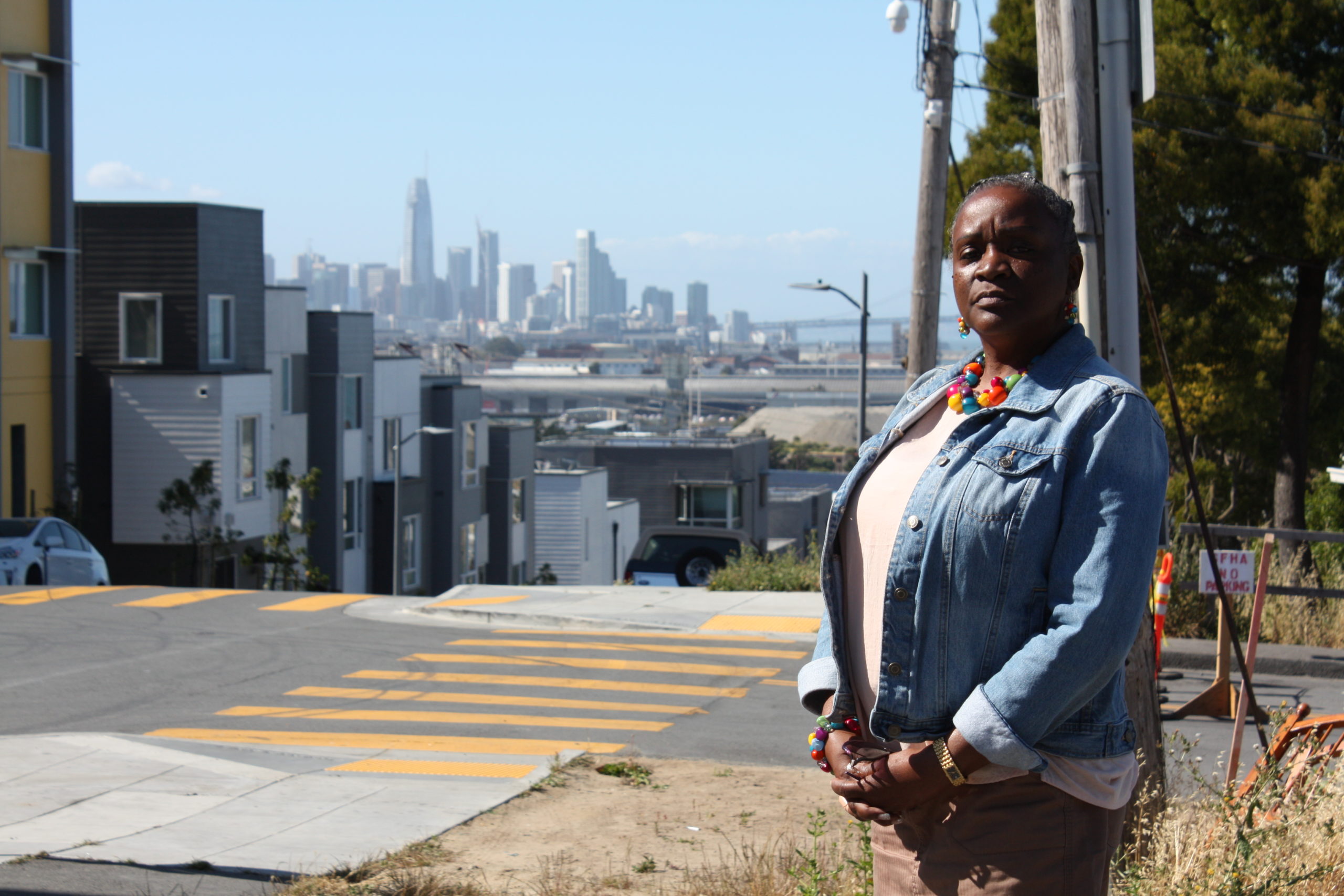One of the first things you notice when you meet Lottie Titus is that she knows the names of all of the neighbors in her gleaming new apartment complex in San Francisco’s Bayview-Hunters Point neighborhood. She even knows all of the dogs’ names. “Not the cats, though,” she points out with a smile.
For the past 22 years, Lottie and her family lived at Hunters View’s “Old Side,” as the locals now call it, a dilapidated, 60-year-old public housing complex in Bayview-Hunters Point. There, she said that she and her family couldn’t use their bathtub because it was too rusted. In one of the emptier buildings, squatters moved in and sold drugs. And thieves would come in to steal metal from the building.
Three months ago, Lottie’s family moved 200 feet west, from the “Old Side” of Middle Point Road to the “New Side,” where they live in San Francisco’s gorgeous new mixed-income housing community. Since 2012, 111 families have made this transformational journey, and become the first residents of the new Hunters View.
Three more phases will be completed and inhabited by 2021. The phasing is intentional, so that long-time “Old Side” residents can continue to live in their homes during construction instead of being displaced. Beyond housing, Hunters View offers child care, a playground, career development services, as well as mental health services to help residents cope with adversity.
Hunter’s View is the first of four “HOPE SF” projects that were conceptualized by former San Francisco Mayor Gavin Newsom in 2006. HOPE SF developments are revitalizing the city’s most distressed public housing complexes, and creating inclusive, economically thriving communities by bringing families of all income levels together. The developments are funded by a combination of public and private funding, including support from The San Francisco Foundation.
Hunters View is being touted as a model public housing solution for cities around the country. One of the reasons for Hunters View’s success is that the project was planned and built in partnership with resident leaders like Lottie. ”It has to be resident driven or it won’t work,” says Lottie. “Because we had a hand in this, we appreciate it even more.”
Lottie, a 59-year-old grandmother, moved with her family from Texas to San Francisco when she was two years old. Her father was a supervisor for Muni, the city’s public transportation system, and her mother cleaned rooms at the Geary Parkway Motel in the city’s Richmond district. But as an adult, Lottie fell on difficult times. No longer able to pay rent, Lottie sent her daughters to live with her parents in Texas. For five long years, Lottie was homeless and sleeping on friends’ couches.
Sitting in her gorgeous new home today, those days seem like a lifetime ago. But it is because of this adversity that Lottie has become a powerful advocate for her Hunters View neighbors—people who, like her, are working to give their families a better life. “I know what it’s like to be homeless, to live in public housing, to raise children on your own,” she says. “I know what it’s like to struggle because I too have struggled.”
Lottie works for the YMCA as one of six case managers dedicated to supporting the residents of Hunters View by helping them access health and wellness services. To reflect the diversity of the residents, the team includes bilingual Samoan and Cantonese case managers. She is also a commissioner for the San Francisco Housing Authority.
“I love this city. I love San Francisco,” she says. “People like me want to stay, but in order to do that we need decent housing and wages, and better spiritual, emotional and physical conditions,” she says. “A well-rounded community grows, prospers and thrives.”


